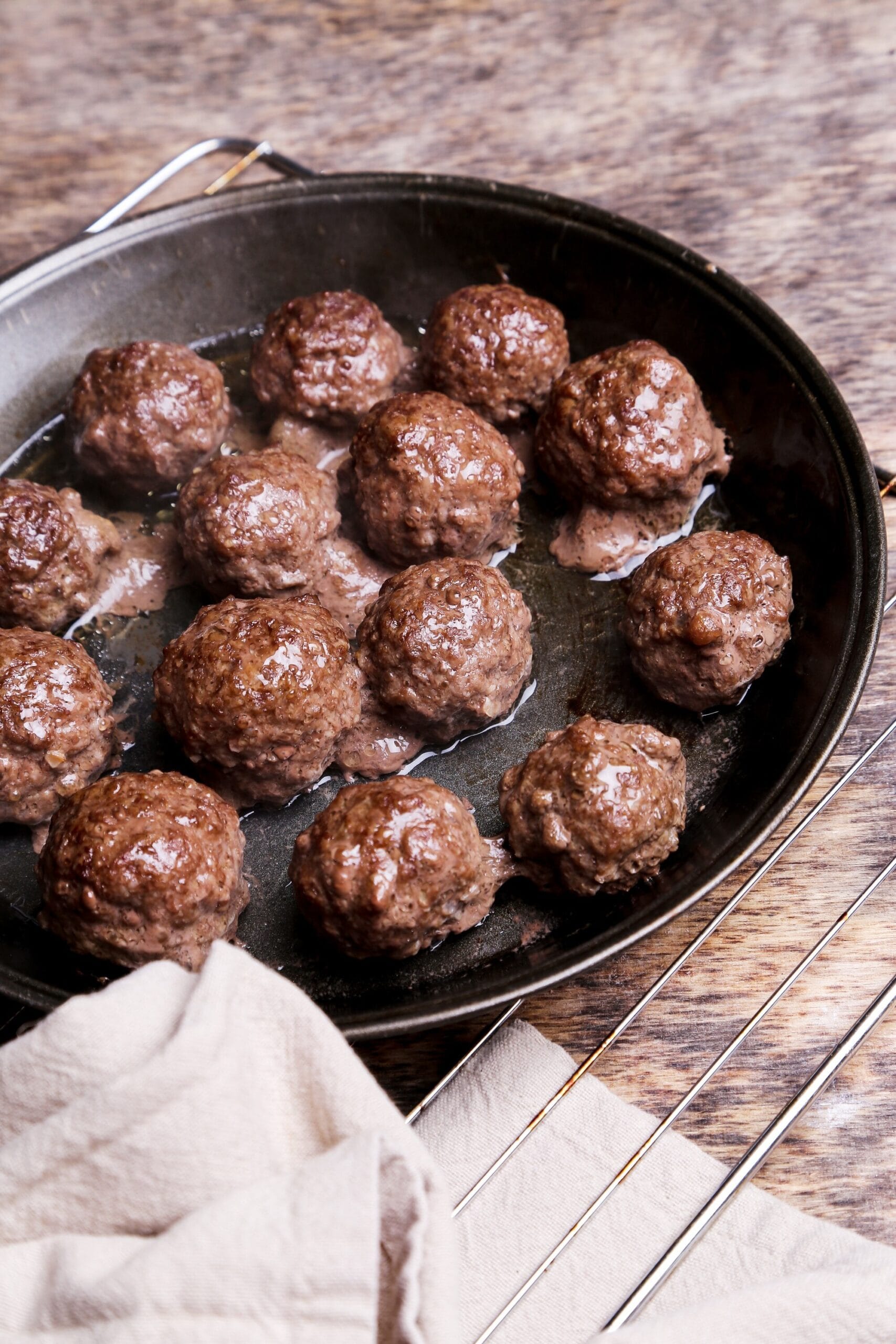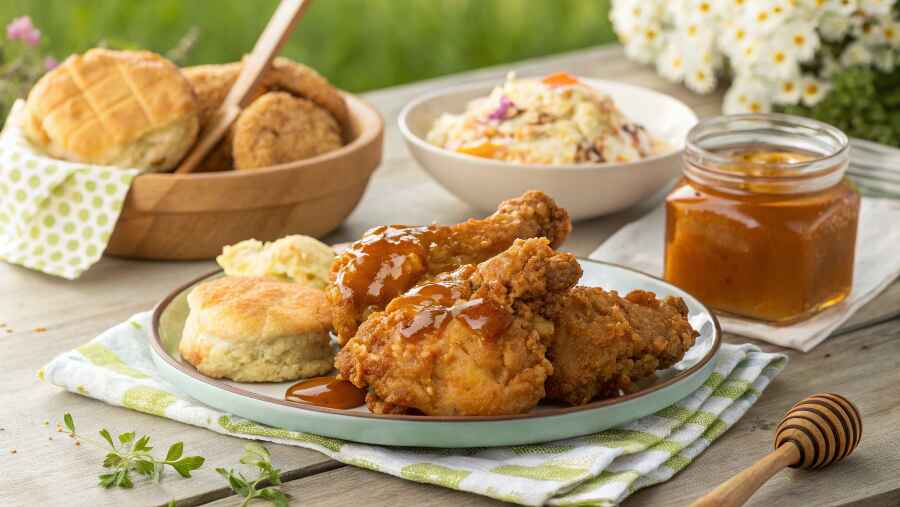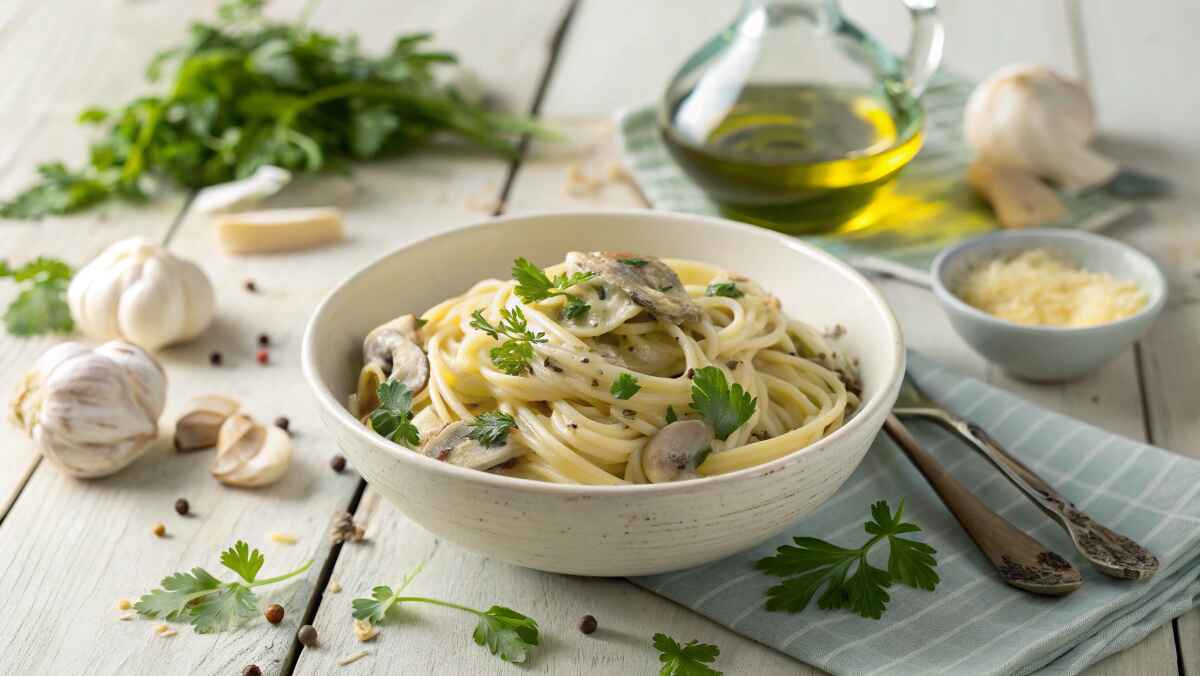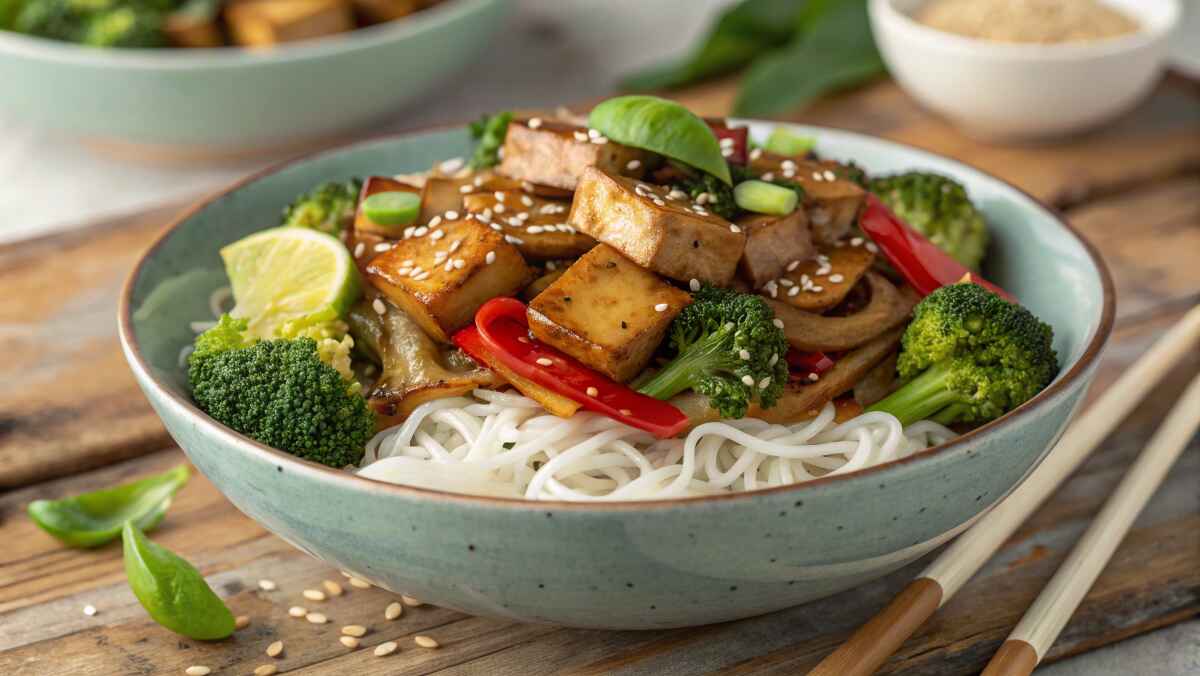Gluten-free meatballs are a culinary gem, offering a combination of versatility, flavor, and inclusivity that makes them an ideal choice for a wide range of dietary needs and preferences. These meatballs cater not only to individuals with celiac disease or gluten intolerance but also to anyone seeking a healthier, more balanced approach to traditional comfort food. By replacing gluten-containing ingredients with thoughtful alternatives, gluten-free meatballs retain their tender texture and rich flavor while becoming accessible to more people at your table.
Whether you’re crafting a hearty family dinner to bring everyone together or preparing bite-sized appetizers that are perfect for a festive gathering, gluten-free meatballs adapt effortlessly to the occasion. Their flexibility allows them to fit seamlessly into various cuisines, from Italian classics paired with gluten-free pasta to Asian-inspired options served with rice or noodles. Additionally, they make an excellent choice for meal prep, freezing beautifully and reheating quickly for a convenient, delicious option anytime.
In this comprehensive guide, we’ll dive deep into everything you need to know about making the best gluten-free meatballs. From selecting the right ingredients to mastering cooking techniques, we’ll guide you through every step of the process. Furthermore, we’ll explore serving suggestions, recipe variations, and pairing ideas to help you create dishes that are both satisfying and memorable. As you continue reading, you’ll find inspiration to transform this simple dish into an inclusive, versatile centerpiece that elevates any meal. Whether you’re an experienced home cook or new to gluten-free cooking, this guide is your ultimate resource for mastering gluten-free meatballs with confidence and creativity.
Why Choose Gluten-Free Meatballs?
Gluten-free meatballs are a staple for individuals with celiac disease or gluten intolerance. In addition, they are ideal for those looking to reduce gluten consumption for health reasons. Beyond dietary considerations, these meatballs offer several key benefits:
- Health Benefits: Using alternatives like almond flour or oats increases fiber and nutrients, making them both nutritious and satisfying.
- Customizable Flavors: From Italian classics to Asian-inspired twists, there’s a version for everyone. Moreover, their flexibility allows you to experiment with ingredients to match your preferences.
For example, if you’re interested in complementary dishes, check out the Boneless Ribs Guide to Cooking, which pairs wonderfully with gluten-free meals.
Essential Ingredients for Gluten-Free Meatballs
Creating the perfect gluten-free meatballs requires careful ingredient selection. To begin with, here are the essentials:
1. Protein Base
- Ground beef, turkey, or pork are classic choices. Alternatively, vegetarian options like lentils or chickpeas can provide a plant-based alternative.
2. Gluten-Free Binders
- Gluten-free breadcrumbs or crushed crackers work well.
- Almond flour or oats add texture and richness. As a result, they enhance the meatballs’ structure without compromising flavor.
For detailed tips on substitutions, visit this guide to Potato Mille Feuille, where creative alternatives take center stage.
3. Flavor Boosters
- Garlic, onion, and Italian seasoning are must-haves. Similarly, ensure your spices are certified gluten-free to avoid cross-contamination.
4. Moisture Enhancers
- Eggs or dairy-free milk alternatives keep the meatballs juicy.
- Grated onion can also add moisture while enhancing the flavor. Therefore, this ingredient is a great addition for both texture and taste.
Step-by-Step Guide to Gluten-Free Meatballs
1. Preparation
- Gather all ingredients and preheat the oven to 350°F. Meanwhile, prepare your mixing bowl and baking tray for efficient cooking.
2. Mixing Ingredients
- Combine protein, gluten-free binders, seasonings, and moisture enhancers in a bowl. In contrast to overmixing, which can lead to tough meatballs, gently mix until just combined.
3. Shaping and Cooking
- Roll the mixture into 1-2 inch balls.
- Choose a cooking method:
- Baking: Place on a lined sheet and bake for 15-20 minutes.
- Pan-Frying: Cook in a skillet until golden brown.
- Air Frying: Air fry at 375°F for 10-12 minutes. As a result, you’ll achieve crispy, evenly cooked meatballs.
Recipe Variations for Gluten-Free Meatballs
One of the best things about gluten-free meatballs is their adaptability. For example, here are three creative variations to inspire your next meal:
1. Italian Gluten-Free Meatballs: A Timeless Classic
Few dishes evoke comfort like a plate of Italian-style meatballs. Therefore, this version stays true to tradition while being completely gluten-free.
- Ingredients: Combine ground beef, gluten-free breadcrumbs, Italian herbs, and grated Parmesan.
- Serving Suggestion: Toss with marinara sauce and gluten-free spaghetti. Alternatively, serve with zoodles for a lighter option.
- Pairing Idea: Add a tangy side like Tomato Burrata Salad. As a result, the acidity of the tomatoes enhances the savory richness of the meatballs.
2. Asian-Style Gluten-Free Meatballs: Bold and Flavorful
- Ingredients: Use soy-free soy sauce, sesame oil, and fresh ginger.
- Serving Suggestion: Pair with jasmine rice or rice noodles. For an extra burst of flavor, drizzle with teriyaki sauce.
3. Vegetarian Gluten-Free Meatballs: Plant-Based Perfection
- Ingredients: Use lentils or chickpeas, ground oats, and spices like cumin and coriander.
- Serving Suggestion: Serve over quinoa or with tahini sauce. Furthermore, roasted vegetables make an excellent side.
Serving Suggestions for Gluten-Free Meatballs
1. As a Main Course
- Pair with marinara sauce over gluten-free pasta. Alternatively, use zoodles for a low-carb option.
- Add a side of roasted vegetables or a fresh salad for a balanced meal.
2. As an Appetizer
- Skewer meatballs with vegetables for bite-sized servings. For variety, offer dipping sauces like garlic aioli or teriyaki glaze.
3. Pairing with Dessert
To complete your meal, finish with a light, elegant dessert like this Strawberry Mille Feuille. In contrast to heavier desserts, this option keeps the meal balanced and refreshing.
FAQs About Gluten-Free Meatballs
1. Are gluten-free meatballs healthier?
Yes, gluten-free meatballs can be a healthier option, especially when made with thoughtful ingredient choices. Using lean proteins like ground turkey, chicken, or even plant-based alternatives helps reduce saturated fat while maintaining high protein content. Additionally, incorporating nutrient-rich binders such as almond flour or oats boosts the dish’s overall nutritional value.
Almond flour, for instance, is not only gluten-free but also low in carbs and high in healthy fats, vitamin E, and fiber, making it an excellent choice for those seeking a low-carb or keto-friendly option. On the other hand, oats provide a hearty texture and are packed with soluble fiber, which supports digestive health. By choosing these wholesome ingredients, gluten-free meatballs can offer a healthier profile without sacrificing flavor or texture.
Furthermore, the ability to control sodium levels and avoid preservatives found in pre-packaged options ensures that homemade gluten-free meatballs align with a clean-eating approach. Whether you’re catering to dietary restrictions or simply aiming for a healthier lifestyle, gluten-free meatballs can be a smart, delicious choice.
Replacing traditional breadcrumbs in gluten-free meatballs is easier than you might think, thanks to a variety of versatile alternatives. Each option has its unique texture and flavor, allowing you to tailor the recipe to your needs and preferences.
- Gluten-Free Breadcrumbs: These are the most direct substitute and can be found in most grocery stores. They replicate the texture and binding properties of regular breadcrumbs without any gluten.
- Crushed Gluten-Free Crackers: These add a slightly crispy texture and can impart a unique flavor depending on the type of cracker used. For example, herb-flavored crackers can enhance Italian-style meatballs.
- Almond Flour: This low-carb, nutrient-dense option works well as a binder and adds a subtle nutty flavor to the dish. It’s perfect for those following a keto or paleo diet.
- Oats: Use rolled or quick oats (certified gluten-free) for a hearty, rustic texture. They absorb moisture well and help keep the meatballs tender.
Pro Tip: To enhance flavor and ensure a cohesive mixture, toast your chosen substitute lightly before incorporating it into the recipe. As a result, your meatballs will achieve a perfect balance of texture and taste.
3. Can I freeze gluten-free meatballs?
Absolutely! Gluten-free meatballs are an excellent candidate for freezing, making them a convenient option for busy weeknights or meal prep enthusiasts. Whether cooked or raw, they retain their texture and flavor beautifully when stored properly.
How to Freeze Cooked Meatballs
- Allow the cooked meatballs to cool completely before freezing.
- Arrange them in a single layer on a baking sheet and freeze until solid.
- Transfer the frozen meatballs to an airtight container or freezer-safe bag.
How to Freeze Raw Meatballs
- Shape the raw meat mixture into balls and place them on a lined baking sheet.
- Freeze until firm, then transfer them to a container or bag for long-term storage.
Reheating Tips
- For cooked meatballs, reheat directly in the oven, stovetop, or microwave. Add a splash of sauce or broth during reheating to maintain their juiciness.
- For raw frozen meatballs, cook them directly from frozen, adding a few extra minutes to the cooking time.
Storage Duration: Gluten-free meatballs can be stored in the freezer for up to three months without losing their flavor or texture. This makes them an ideal option for quick, nutritious meals when you’re short on time.
Conclusion
Crafting gluten-free meatballs is a rewarding and versatile experience. With a few adjustments, you can create dishes that cater to diverse dietary needs while delivering incredible flavor. Whether served as a main course, appetizer, or part of a larger meal, these meatballs adapt beautifully to any setting. For more creative inspiration, explore the recipe collection on Delishing Recipes.
Transform your kitchen with this guide and discover the joy of cooking delicious, inclusive meals. By embracing these techniques, you’ll have everyone at the table asking for seconds!




